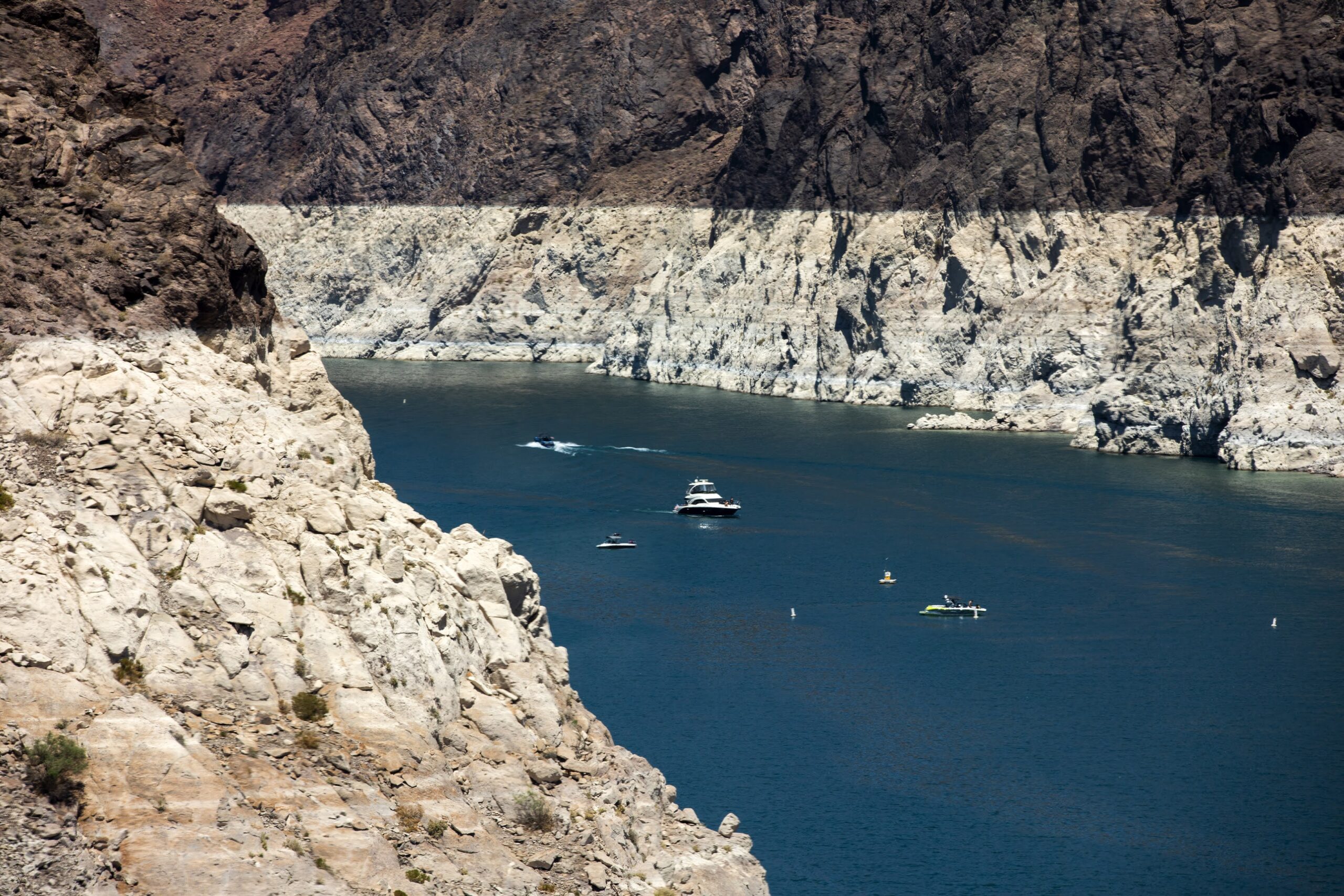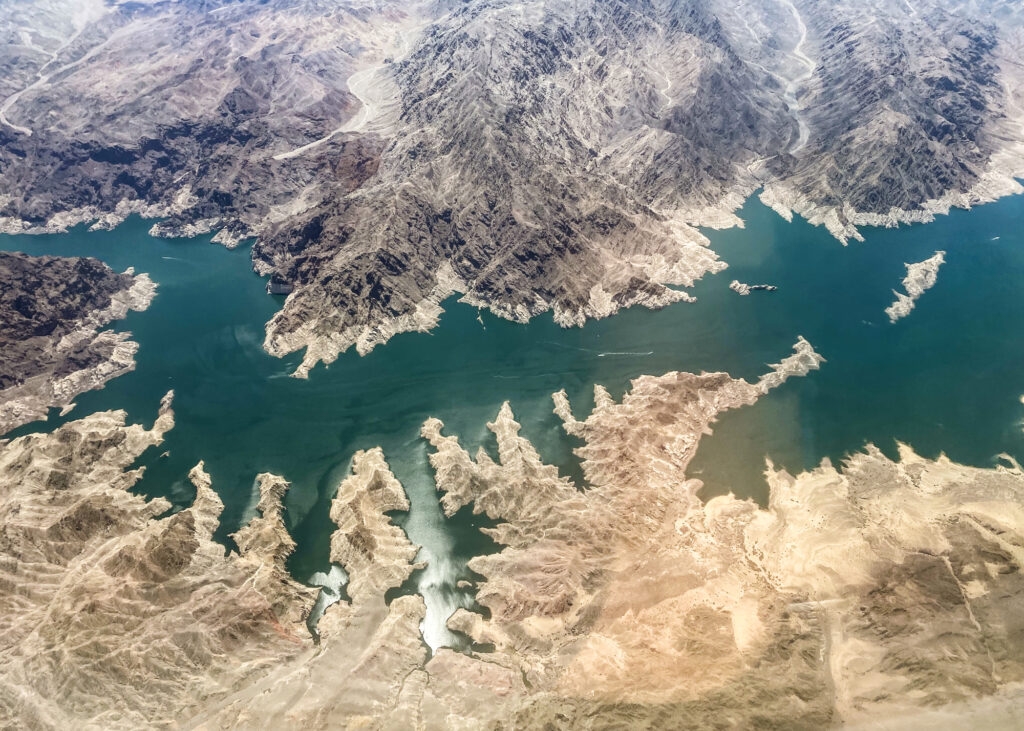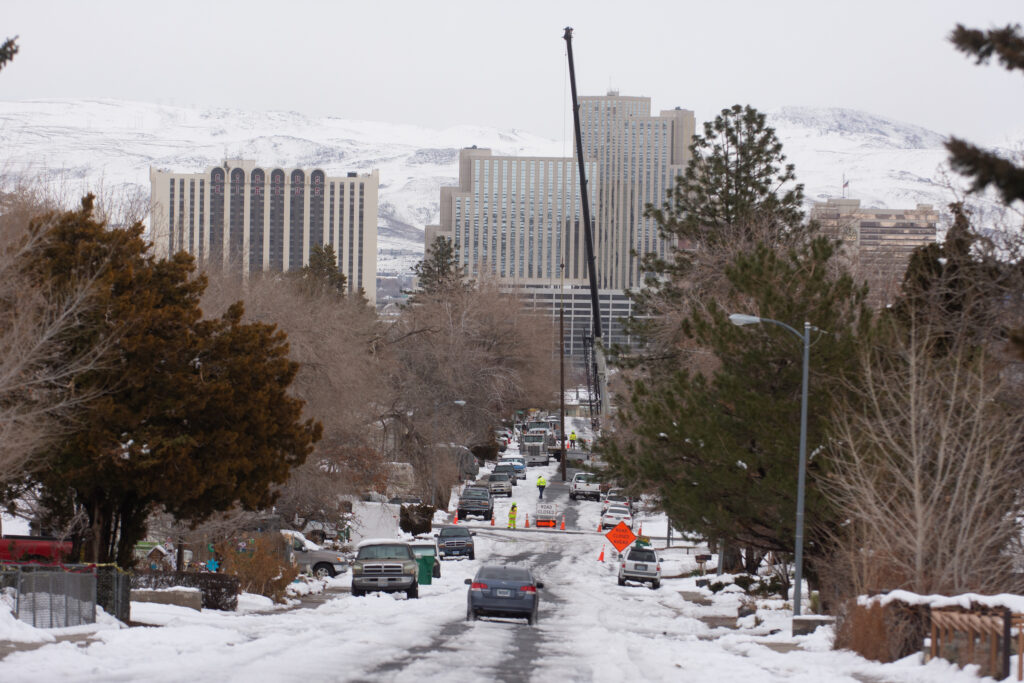Nevada outlines framework for Colorado River cuts as states show their cards

Good morning, and welcome to the Indy Environment newsletter.
As always, we want to hear from readers. Let us know what you’re seeing on the ground and how policies are affecting you. Email me with any tips or suggestions at [email protected]
To get this newsletter in your inbox, subscribe here.
At the end of last year, the seven states in the Colorado River Basin committed to once again work together and negotiate a consensus framework for making significant cuts to water use, an attempt to stabilize the nation’s two largest reservoirs and avoid an even deeper shortage crisis.
The states recommitted to considering a consensus deal, by Jan. 31, after several deadlines passed in 2022 — with seemingly irreconcilable differences over how to make painful cuts in a watershed relied upon by 40 million people who use the river for drinking water and agriculture.
The new round of negotiations come as the federal government prepares to take unprecedented administrative action on the Colorado River. In November, federal water managers issued a formal notice that they planned to analyze options to update the river’s operating rules, agreed upon in 2007, to meet the severe shortage conditions facing the watershed.
Among the states, there is agreement that the Colorado River faces a crisis. The river’s two largest storage reservoirs — Lake Powell and Lake Mead — are hovering at critically low levels.
Lake Powell, which sits at the border of Utah and Arizona, upstream of the Grand Canyon, is 24 percent full. Downstream, Lake Mead is only 28 percent full (and the amount of available water could be even lower, as states have banked large volumes of water in the lake for future use).
It is easy to get lost in the details. The bottom line is less water has come into the river, because of prolonged drought and a drying climate. At the same time, states downstream of Lake Powell have continued to overdraw on the two reservoirs, straining the system. The only short-term solution is to cut back.
The U.S. Bureau of Reclamation, tasked with managing much of the river’s infrastructure and water deliveries, has made it clear it wanted to see significant cuts before now. And the agency is preparing to take action this year. There seem to be two paths on the table.
One is a consensus-based framework agreement: By Jan. 31, the seven states come up with a framework for a plan that would stabilize Lake Mead and Lake Powell from crashing to extremely low elevations that would threaten hydropower production or water deliveries. The other is the agency imposes actions it could take using its authority.
Both alternatives are expected to be analyzed as part of a formal environmental review required by the National Environmental Policy Act, known as NEPA. In that seemingly technical process, Dec. 20 was an important date. It was a deadline for the public, including the seven states and their top negotiators, to submit formal comments about how they want the cuts to unfold.
The letters, linked below, are important public documents. Although these letters are written in legalistic terms, they outline how the seven states view key issues about how to move forward. They show areas where the states agree and where states diverge.
Of note was the comment letter from Nevada, which outlined a possible framework to achieve consensus. It was the only state-led letter that suggested a comprehensive framework.
In fact, two other letters specifically refer to the Nevada plan as a starting point for the state discussions. Arizona officials wrote that they “endorse the consideration” of Nevada’s plan “as a starting point for development of a consensus-based set of actions. And a Wyoming official said the state will consider Nevada’s proposed framework, without endorsing any one element of it.
Wyoming State Engineer Brandon Gebhart wrote in the state’s public comment letter that the state actually “opposes some of the specific elements of [the Nevada] proposal,” but it “intends to consider the proposal in an effort to reach an appropriate consensus framework agreement.”
In an interview, Bill Hasencamp, an official with the Metropolitan Water District of California, said that because the plan was released, water officials agreed to consider it. Hasencamp said the “helpful thing” about Nevada’s plan is it lays out several key issues from which the states can develop alternatives. States, he said, have been developing their own proposals and modeling them.
“We’ve been working feverishly to try to reach a consensus alternative,” he said.

So, if Nevada’s proposal identifies key issues for the consensus negotiations, what exactly is it?
Here is a brief (though not comprehensive) summary, of the Nevada framework:
- Taking current shortage cuts earlier: The states that rely on Lake Mead — Arizona, California and Nevada — are part of the Lower Colorado River Basin. Together, Arizona and California account for most of the water consumed. In 2019, the three states agreed to absorb cuts to their allocations, on a tiered system, tied to water levels at Lake Mead.
The consensus framework, proposed by the Southern Nevada Water Authority and the Colorado River Commission of Nevada, argues for taking the highest tier of cuts sooner. This would mean more significant cuts earlier to prevent Lake Mead from falling.
- Storing water for public health, safety and welfare: The plan calls for identifying a “Lake Mead Protection Elevation” and ensuring the reservoir contains, at a minimum, 18 months of water for public health, safety and welfare for water users in the Lower Basin.
It also calls for creating a dynamic shortage condition, laying out baseline allocations for Arizona, California and Nevada when Lake Mead is at a low elevation. The plan would allow federal officials to reduce these allocations if they would put Lake Mead under the protection elevation — and it places a priority on public health, safety and welfare uses.
- Modifying Lake Powell releases: Lake Powell feeds water into Lake Mead. Together, both reservoirs generate hydropower for utilities, tribal nations and local governments across the West. And both reservoirs have neared critical elevations in recent years, endangering hydropower production and threatening the reliability of Colorado River water deliveries.
The Nevada consensus framework calls for more flexibility in how these releases occur, with a goal of preventing Lake Powell from dropping to “minimum power pool,” a critically low level at which water might not be delivered reliably.
The plan further calls on Upper Colorado River Basin states — Colorado, New Mexico, Utah and Wyoming — to make cuts in their water use when the reservoirs are facing a shortage. And it asks the Upper Basin states to push water from upstream reservoirs.
The Upper Basin states, in separate and joint letters, acknowledged that releases might have to be decreased from Lake Powell, meaning Lake Mead would get less water. But states said decreased releases should not count against its “obligations” under the 1922 Colorado River Compact to ensure a certain amount of water flows downstream.
- Make cuts to account for evaporation: Every year, as water is collected in the river’s massive reservoirs and makes its way through ditches and diversions, large volumes are lost through evaporation and leaky infrastructure. These evaporation losses are unaccounted for in each Lower Basin state’s water budget.
As the Upper Basin states point out in their letters, this lack of accounting has made — and continues to make — the situation at Lake Mead and Lake Powell much worse.
In all, evaporation losses are estimated annually to equal about 1.5 million acre-feet (an acre foot is the amount of water that can fill one acre to the depth of one foot). That is a huge volume of water. For scale, Nevada’s entire allocation is 300,000 acre-feet and the total cuts the federal government is calling for are 2-4 million acre-feet. Accounting for evaporation loss could make a huge dent in achieving that goal. It would require water users to budget for evaporation loss by cutting water use even more.
Still, major questions and conflicting opinions remain about how this should be done. Nevada put forth one method to account for evaporation losses, tying them to each water user’s relative reliance on infrastructure, where evaporation and water losses occur. Another method would require Lake Mead water users to cut in proportion to use.
Arizona, in its comment letter, declined to endorse one plan, but top water officials from the state, Tom Buschatzke and Ted Cooke, wrote that they would support an “equitable” accounting plan, arguing that “all Lower Basin water users benefit from storage in Lake Mead. All water users should similarly share the burden of accounting for the impacts.”
California, which is likely to receive the largest cuts to account for evaporation under each method (as it is the largest user and toward the end of the river), said in its letter that it did not support assessing evaporation loss to each water user. Instead, the executive director of the Colorado River Board of California, Christopher Harris, said he suggests the “losses continue to be treated as a diminution of available annual supply.”
In other words, these evaporation losses should be dealt with in recognition of the existing rules that govern all shortages. Those rules follow the doctrine of prior appropriation — “first in time, first in right.” Those who used water first have priority to water first in times of shortage. The “priority system” is a major issue central to the Arizona and California comment letters. How should cuts be divided? What is fair in a crisis like this?
When Congress authorized the Central Arizona Project, a 336-mile diversion of the river, California was given a higher, or “senior,” priority right, relative to the canal. Questions of priority also play out internally within Arizona and California — as farming communities often have “senior” water rights relative to cities that developed and grew more recently.
Finally, there remain unanswered legal questions about how evaporation and system loss would be considered in the context of water users with treaty rights that the federal government holds with Mexico and tribal nations across the watershed.
The letters, taken as a whole, identify a number of other concerns and considerations, including the scope of the cuts, the federal government’s legal authority and the timeline for the cuts. The states are separately renegotiating the 2007 operating rules for the river, set to expire in 2026.
Less than three weeks before the Jan. 31 deadline, only one state has released a public plan with a concrete framework. John Fleck, a professor at the University of New Mexico who has written extensively about the Colorado River, said it’s time for states to disclose their plans.
“If people don't like the Nevada plan, it's incumbent upon them to tell us what their plan is,” he said.
Links to the state’s comments:
Lower Basin
- Arizona Department of Water Resources and Central Arizona Project
- Colorado River Board of California
- Southern Nevada Water Authority and Colorado River Commission of Nevada
Upper Basin
Here's what else I'm watching this week:

Gov. Joe Lombardo’s makes appointments to natural resource positions:
- Former Assemblyman James Settelmeyer (R-Minden) will lead the Department of Conservation and Natural Resources, an agency with hundreds of employees who oversee such things as mine permits, water rights, forestry and state parks.
- Alan Jenne, the Nevada Department of Wildlife’s habitat administrator, will fill the top role at the agency after Tony Wasley retired at the end of last year.
- State veterinarian and Eureka County Commissioner J.J. Goicoechea will lead the Nevada Department of Agriculture, which oversees farming and ranching activities.
- You can read more about Lombardo’s executive appointments here.
Winter storms bring power outages, flooding and a lot of snow: Last week, I wrote about a heavy New Year’s storm that left more than 70,000 NV Energy customers without energy across northwestern Nevada. Those storms have continued over the past week as massive atmospheric rivers have taken a particular toll on coastal California and the greater Sacramento region, causing mudslides, widespread flooding and power outages for hundreds of thousands.
- A top California official said that at least 17 people have died since storms began in December, The Associated Press reported.
- A skier was killed this week in a rare avalanche near Las Vegas, CBS and The Associated Press reported.
- The storms brought much-needed snow to the Great Basin and the eastern Sierra mountains that feed western Nevada rivers, the National Resource Conservation Service (NRCS) reported Monday. Here are some of the numbers: “Based on Jan. 9 NRCS SNOTEL weather station data back to 1981, the Carson River Basin has its greatest snow water amount for this time of year on record. Other notable snow water amounts include Walker River Basin, second highest behind 1997; Humboldt River Basin, third highest behind 1984 and 1989; and Eastern Nevada, fourth highest behind 1984, 2005 and 2011.”
Burning Man, Friends of Black Rock/High Rock, Friends of Nevada Wilderness, a Gerlach resident and the owner of Great Boiling Springs sued federal land managers this week over a decision to permit a geothermal exploration project in northern Washoe County.
- The lawsuit argues the project, which includes 19 drilling wells and well pads, lays “the foundation for turning a unique, virtually pristine ecosystem of environmental, historical, and cultural significance into an industrial zone, and permanently alter the landscape.”
Thacker Pass lithium mine is the latest test of 1872 Mining Law: Last week, a U.S. District Court judge heard arguments over the merits challenging a federal permit allowing the Thacker Pass lithium mine to operate on public land. Central to the arguments presented to the federal court was the interpretation of the 1872 Mining Law. More in my story from over the weekend.
When it comes to restoring land for wildlife, small improvements make a big difference. That’s the main takeaway from Richard Bednarski’s weekend story in The Nevada Independent looking at fence removal projects at the Sheldon National Wildlife Refuge in northern Nevada.
The L.A Times launches a new podcast on the Colorado River.
“Groundwater is like a bank account, and when you take more out than you are putting in, at some point the account runs dry.” That quote comes from a media release about a new report by the U.S. Geological Survey that found groundwater declines in Smith and Mason valleys.
“Days before Utah lawmakers are set to convene, dozens of researchers are calling on them to take bold action and save the Great Salt Lake before it withers away,” The Salt Lake Tribune’s Leia Larson wrote last week. A new report found the lake could disappear in the next five years.
“We do not submit this request lightly.” Environmentalists have asked California’s water board to halt Los Angeles’s diversions from Mono Lake, L.A. Times’ Louis Sahagún reports.
